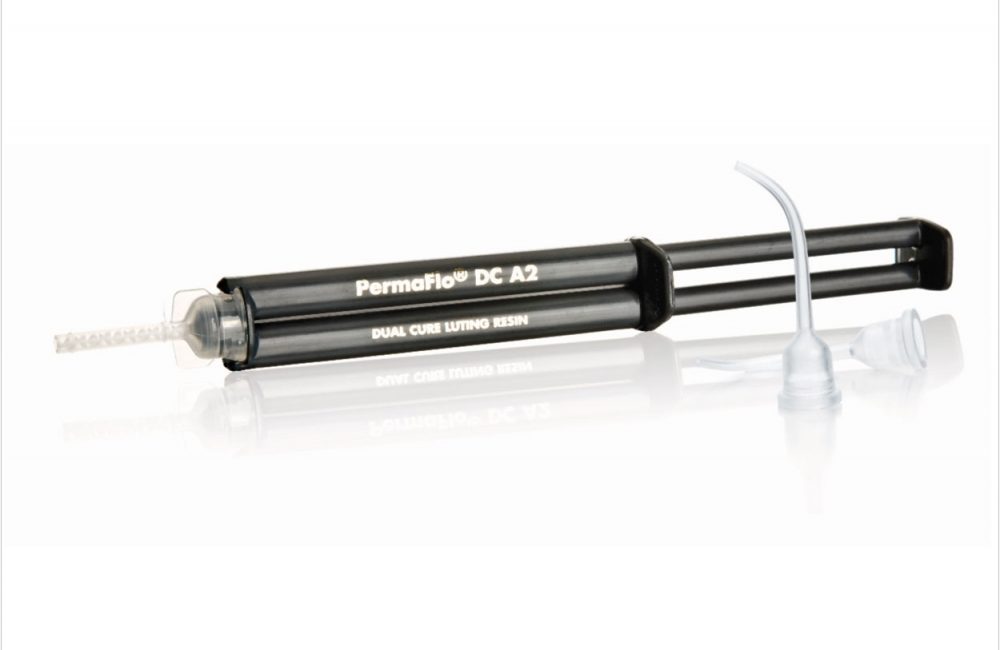
The ever-growing world of all-ceramic restorations provides an impressive variety of aesthetic solutions for today’s patients. At the same time, it presents a new challenge for clinicians: to choose the right combination of materials for the best result. It can be a dizzying task to pair a luting material with a specific type of ceramic because there are so many options to consider. The goal is to select the ideal substrate for the prosthesis and then cement with a compatible, retentive material. This concept is simple in theory, but in practice, the wrong decision can lead to a restoration that fails too soon.
Whether a clinician chooses a crown made of zirconia, feldspathic porcelain, lithium disilicate, leucite, or even a classic PFM, Ultradent’s PermaFlo DC is always an ideal choice for luting. When paired with a quality adhesive system, PermaFlo DC ensures optimal strength and retention for a restoration that will withstand the test of time. Ideal for luting inlays, onlays, crowns, and bridges, PermaFlo DC features an extremely low film thickness—9 µm—that won’t interfere with fit or occlusion. Its 4 shade options (A2, B1, Translucent, and Opaque White) allow for optimal shade matching when needed. PermaFlo DC’s dual-cure formula can be light-activated for faster polymerization. In chemical cure mode, its working time is 2.5 minutes, and it will fully polymerize in 5 to 8 minutes.
In the following case, PermaFlo DC was used to cement an anterior crown made of feldspathic porcelain. Follow the steps below to achieve an aesthetic and lasting result.













